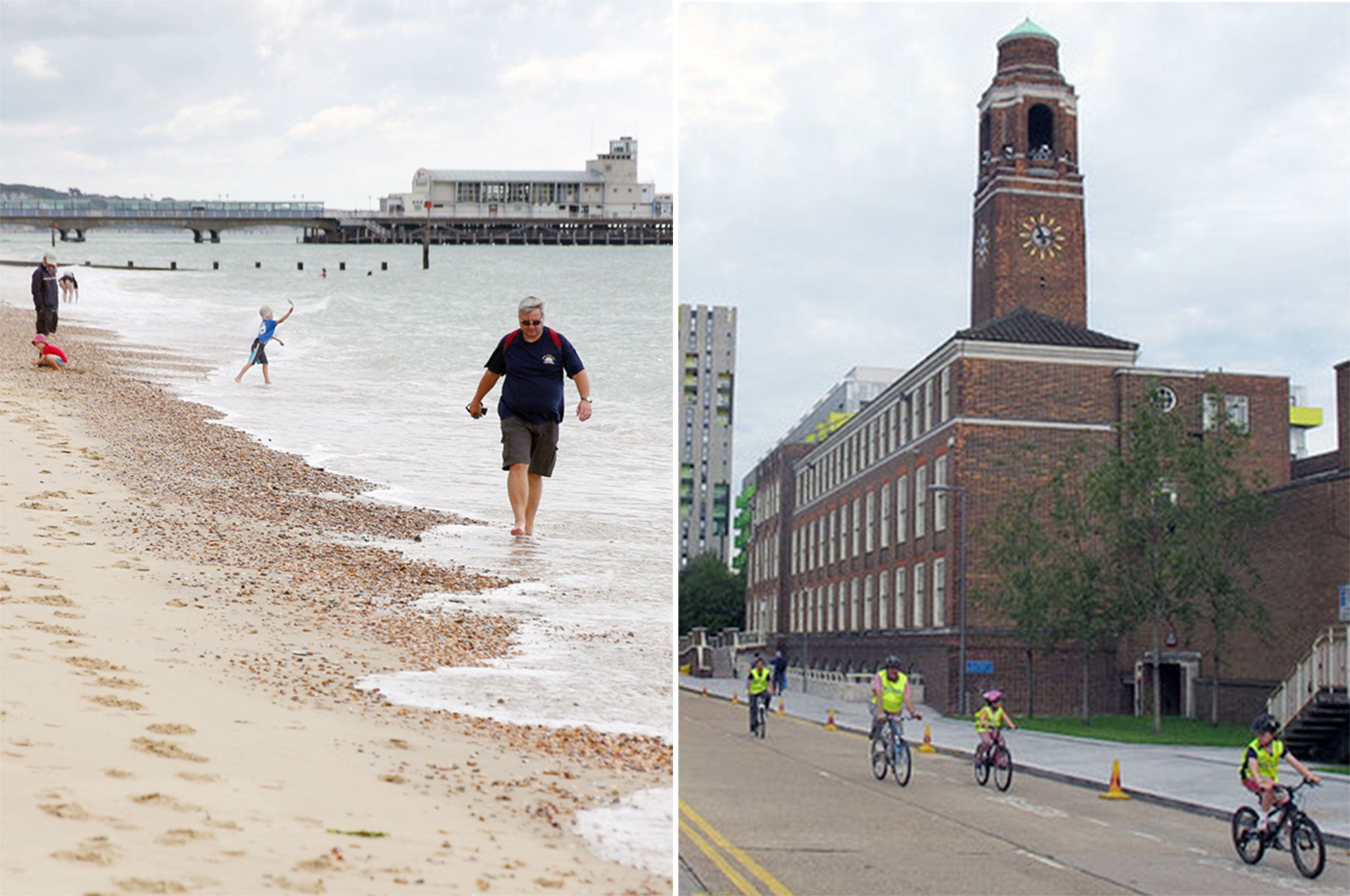Bournemouth and Barking: The two areas of UK where people are getting younger
The two areas fly against a national trend which could see the median age for the United Kingdom reach 43 by 2037 – up from 36 in 1992

The outlook is decidedly grey across Britain, with the population of almost every city, town and village set to get older in the coming years.
But the notable exceptions to this trend are not the metropolitan hubs known for their youth culture, but the more-sedate settings of Bournemouth in Dorset and Barking and Dagenham in east London.
That’s according to a new forecast of Britain’s ageing population based on data released last week by the Office for National Statistics (ONS), looking at a timespan of 1992 to 2037.
The ONS experts predict that the median age for the United Kingdom will reach 43 by 2037 – up from 36 in 1992.
Bournemouth and Barking and Dagenham are the only parts of the country where the median age is set to fall over this 45-year period.
In Bournemouth, traditionally seen as a place to retire, the median age is projected to decline from 34 to around 33 and six months.
“What’s happened over the past decade is that there has been an influx of working-age people to the area, particularly migrants,” according to Professor Jane Falkingham, director of the Economic and Social Research Council Centre for Population Change at Southampton University.
Councillor Mike Greene of Bournemouth Borough Council points to the booming local digital economy as another draw for young workers.
In Barking and Dagenham, it’s the rising birth rates that are playing a part in a slight fall in the median age to around 41 by 2037.
A spokesperson for the London Borough of Barking and Dagenham cited the influx of “young families and first-time buyers” attracted by low house prices.
Overall, the data is a reflection of increasing longevity across the board – with half of those born after 2007 expected to live to over 100.
In absolute terms, the oldest parts of Britain will be Rother in Sussex, and north Norfolk, where the median age will exceed 57 by 2037.
Communities in rural Scotland account for half of the top 10 fastest-ageing parts of the country. The Western Isles (Eilean Siar) tops the “fastest-greying” list, with a 31 per cent increase in the median age between 1992 and 2037 from 38 to 55 years old.
Other rapidly-ageing locations include Inverclyde, Clackmannanshire, the Shetland Islands and north Ayrshire – all of which will see a rise of more than 25 per cent in the median age by 2037.
The slowest-greying areas of the UK include several English cities, notably Southampton, Bristol, Nottingham and Norwich. In comparison, rural areas of England will age rapidly – mainly due to young people leaving home in search of work further afield.
In the Western Isles, fewer than one in seven will be under 16 by 2037. In contrast, one in four of the residents of Barking and Dagenham will be in this age group.
In remote areas of Scotland, the situation is so dire experts liken it to a modern-day “Highland clearances”, warning people may have to move if they want access to public services – with undersubscribed schools and doctors’ surgeries under threat.
Professor Robert Wright, a population expert at Strathclyde University, told The Independent: “The issue is that depopulation and rapid population ageing of more-remote regions means that it will become too expensive to provide services needed by an ageing population. Basically, people will need to move to receive them.”
Subscribe to Independent Premium to bookmark this article
Want to bookmark your favourite articles and stories to read or reference later? Start your Independent Premium subscription today.

Join our commenting forum
Join thought-provoking conversations, follow other Independent readers and see their replies